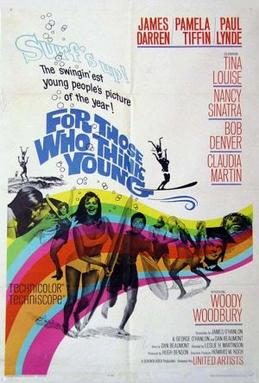
Three Coins in the Fountain is a 1954 American romantic comedy drama film directed by Jean Negulesco from a screenplay by John Patrick, based on the 1952 novel Coins in the Fountain by John H. Secondari. It stars Clifton Webb, Dorothy McGuire, Jean Peters, Louis Jourdan, and Maggie McNamara, with Rossano Brazzi, Howard St. John, Kathryn Givney, and Cathleen Nesbitt. The film follows three American women working in Rome who dream of finding romance in the Eternal City. It was originally titled We Believe in Love.

Anthony George Franciosa was an American actor most often billed as Tony Franciosa at the height of his career. He began his career on stage and made a breakthrough portraying the brother of the drug addict in the play A Hatful of Rain, which earned him a nomination for the Tony Award for Best Featured Actor in a Play. He reprised his role in its subsequent film adaptation, for which he won the 1957 Venice Film Festival Award for Best Actor, and was nominated for the Academy Award for Best Actor in a Leading Role.
The year 1964 in film involved some significant events, including three highly successful musical films, Mary Poppins,My Fair Lady, and The Umbrellas of Cherbourg.

Ann-Margret Olsson, credited as Ann-Margret, is a Swedish-American actress, dancer, and singer with a career spanning seven decades. Initially gaining notoriety in 1961 as a singer with a sultry, vibrant contralto voice, she quickly rose to Hollywood stardom.

Viva Las Vegas is a 1964 American rock and roll musical film directed by George Sidney, written by Sally Benson, choreographed by David Winters, and starring Elvis Presley, Ann-Margret, Cesare Danova, William Demarest and Nicky Blair. Set in Las Vegas, Nevada, the film is about two competing race car drivers who also compete for the same girl.

Wintertime is a 1943 Twentieth Century-Fox musical film directed by John Brahm and starring Sonja Henie and Cesar Romero. It also features Woody Herman and His Orchestra.

Carol Lynley was an American actress known for her roles in the films Blue Denim (1959) and The Poseidon Adventure (1972).

Kitten with a Whip is a 1964 American crime drama film directed by Douglas Heyes, who co-wrote the screenplay with Whit Masterson, a pseudonym for writers Robert Allison “Bob” Wade and H. Bill Miller, who also wrote the novel on which the film is based under the name Wade Miller. The film stars John Forsythe, Ann-Margret, Peter Brown, Patricia Barry and Richard Anderson.

Pamela Tiffin Wonso was an American film and television actress.

John Goldfarb, Please Come Home! is a 1965 American comedy film based on the novel by William Peter Blatty published in 1963. The film was directed by J. Lee Thompson. The film was shot in the Mojave Desert.

The Sun Also Rises is a 1957 American drama film adaptation of the 1926 Ernest Hemingway novel of the same name directed by Henry King. The screenplay was written by Peter Viertel and it starred Tyrone Power, Ava Gardner, Mel Ferrer, and Errol Flynn. Much of it was filmed on location in France and Spain as well as Mexico in Cinemascope and color by Deluxe. A highlight of the film is the famous "running of the bulls" in Pamplona, Spain and two bullfights.

State Fair is a 1962 American musical film directed by José Ferrer, with music by Rodgers and Hammerstein, and starring Pat Boone, Bobby Darin, Pamela Tiffin, Ann-Margret, Tom Ewell and Alice Faye. It is a remake of the 1945 film of the same name, in turn based on the novel by Phil Stong.

Lady in a Cage is a 1964 American psychological thriller film directed by Walter Grauman, written and produced by Luther Davis, and starring Olivia de Havilland and James Caan. The film was released by Paramount Pictures.

Made in Paris is a 1966 American romantic-comedy film starring Ann-Margret, Louis Jourdan, Richard Crenna, Edie Adams, and Chad Everett. The film was written by Stanley Roberts and directed by Boris Sagal.

Bus Riley's Back in Town is a 1965 American comedy film written by William Inge, directed by Harvey Hart, and starring Ann-Margret and Michael Parks.

For Those Who Think Young is a 1964 beach party film shot in Techniscope, directed by Leslie H. Martinson and featuring James Darren, Pamela Tiffin, Paul Lynde, Tina Louise, Bob Denver, Nancy Sinatra in her film debut, Robert Middleton, Ellen Burstyn, Claudia Martin and Woody Woodbury.

Hound-Dog Man is a 1959 American musical comedy drama film directed by Don Siegel, based on the 1947 novel by Fred Gipson, and starring Fabian, Carol Lynley, and Stuart Whitman.

Shelby Grant was an American actress whose credits included Our Man Flint, Fantastic Voyage, and Medical Center.

Tammy and the Doctor is a 1963 Eastmancolor romantic comedy film directed by Harry Keller and starring Sandra Dee as Tambrey "Tammy" Tyree and Peter Fonda as Dr. Mark Cheswick. It is the third of the four Tammy films.
Peter Levathes was an American film and advertising executive, best known for briefly running 20th Century Fox.

















